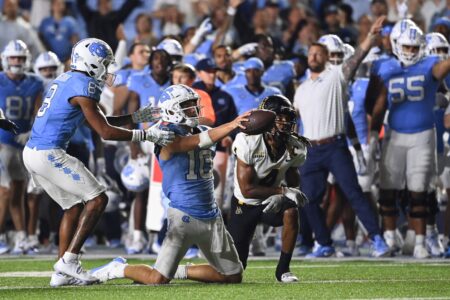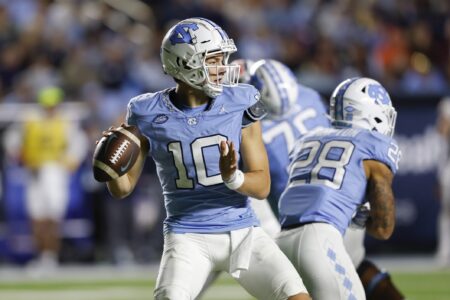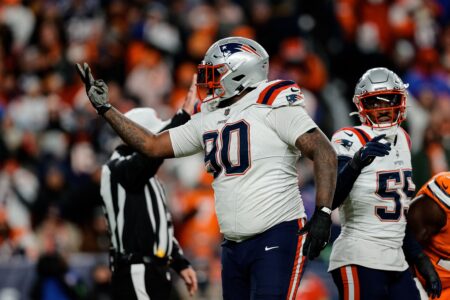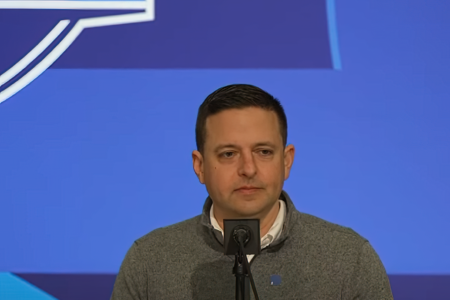fester
Third String But Playing on Special Teams
- Joined
- Feb 7, 2005
- Messages
- 530
- Reaction score
- 88
It is that time of year again when the draft board becomes a combination of useful resource and giant pissing match. One of the major pissing matches is the “success” of a draft, drafting strategy or particular player. A major source of conflict is the many versions of “Success” that posters use. Many versions are internally coherent, but contradicted by other versions of success. This post is a repeat attempt at laying out different variants of “Success”.
1) Absolute success --- did the pick get the best player available (let us not define “best player” at this stage)? For instance, the Patriots chose Brandon Spikes at the tail end of the 2nd round and have in him a quality starter. However, Navarro Bowman was available and thus this was a “non-successful”pick under this definition. A related version is did Team X replicate the 1974 Steelers' draft or at least come within a couple Hall of Famers of it?
2) 1st year rookie starters (credit DW Toys) --- % of drafted rookies who start 5 games or more OR played significant snaps in 10 games or more during their rookie year. The more restrictive criteria produces an 18% hit rate in 2011. The upside of this metric is that it measures immediate impact. The downside is that it is very imprecise as it does not account for team quality (bad teams with horrendous depth will have more rookie starters, all else equal, than good deep teams (see the 2007 Patriots for instance). Other downside is that it does not account for slow to develop positions (Aaron Rodgers would be graded as "non-successful" using this metric)
3) 2nd contract evaluation --(my preferred method) --- % of drafted rookies who receive multi-year contract extensions that extend a player past their RFA time and into their UFA eligbility time) where the contract extension average annual value is equal to or greater than a 1st round RFA tender, or using a looser metric a 2nd round RFA tender. Upside is that this is a team's attempt to value a player entering their prime against market values. The downside is that this is a slow process, at least three years from the draft in question.
4) Starters per year (Good draft hit rates: Lower than you think - AFC South Blog - ESPN) Interesting ESPN article on two GMs (Titans and Colts) who think they need to find 3 solid starters per year on average. This neglects a bit of draft pick efficiency but looks strictly at effectiveness. In a single year, it has the downsides of #1 in neglecting team quality (bad teams should have more marginal hits because the rest of the roster sucks) but it compensates if there is a multi-year averaging.
5) Expected Performance outcomes (good example here NFL Draft Success by Round) A variety of models that look at a players' career achievements versus the expected performance for that draft position. This rewards teams who have low draft ammunition but good results while downgrading teams that are picking at the tops of the rounds (easier to find good players picking first instead of last).
6) Draft value weighted success --- Pick #10 should, all else being equal, have more value in terms of a higher probability of finding a player with high impact than pick #199 or #252, so the same player/performance profile taken at #10 is less valuable than that player taken at #199 or as Mr. Irrelevant. Conversely a bust @ 199 is far less costly/disappointing than a bust at #10.
7) Binkie love --- did my binkie(s) get drafted by the Patriots? If yes, then the pick is successful, if no, especially if the binky in question was still on the board, the pick was a miserable failure.
8) External value matching – how did the Patriots or any other team draft in relationship to some external list of player ranks. If the Patriots got the # 44 player at the 128th pick, it is a great coup. If the converse happens, it is a great reach Sebastion Vollmer and Logan Mankins are examples of contrary results to this approach.
9) Relative Success to leage average --- failure is accepted, but does a draft fail to produce quality NFL players at a lower rate than league and peer averages?
These are just some of the many different definitions of “success” that are used in this forum, and I imagine quite a few other draft focused forums
What other definitions of success are used around here?
1) Absolute success --- did the pick get the best player available (let us not define “best player” at this stage)? For instance, the Patriots chose Brandon Spikes at the tail end of the 2nd round and have in him a quality starter. However, Navarro Bowman was available and thus this was a “non-successful”pick under this definition. A related version is did Team X replicate the 1974 Steelers' draft or at least come within a couple Hall of Famers of it?
2) 1st year rookie starters (credit DW Toys) --- % of drafted rookies who start 5 games or more OR played significant snaps in 10 games or more during their rookie year. The more restrictive criteria produces an 18% hit rate in 2011. The upside of this metric is that it measures immediate impact. The downside is that it is very imprecise as it does not account for team quality (bad teams with horrendous depth will have more rookie starters, all else equal, than good deep teams (see the 2007 Patriots for instance). Other downside is that it does not account for slow to develop positions (Aaron Rodgers would be graded as "non-successful" using this metric)
3) 2nd contract evaluation --(my preferred method) --- % of drafted rookies who receive multi-year contract extensions that extend a player past their RFA time and into their UFA eligbility time) where the contract extension average annual value is equal to or greater than a 1st round RFA tender, or using a looser metric a 2nd round RFA tender. Upside is that this is a team's attempt to value a player entering their prime against market values. The downside is that this is a slow process, at least three years from the draft in question.
4) Starters per year (Good draft hit rates: Lower than you think - AFC South Blog - ESPN) Interesting ESPN article on two GMs (Titans and Colts) who think they need to find 3 solid starters per year on average. This neglects a bit of draft pick efficiency but looks strictly at effectiveness. In a single year, it has the downsides of #1 in neglecting team quality (bad teams should have more marginal hits because the rest of the roster sucks) but it compensates if there is a multi-year averaging.
5) Expected Performance outcomes (good example here NFL Draft Success by Round) A variety of models that look at a players' career achievements versus the expected performance for that draft position. This rewards teams who have low draft ammunition but good results while downgrading teams that are picking at the tops of the rounds (easier to find good players picking first instead of last).
6) Draft value weighted success --- Pick #10 should, all else being equal, have more value in terms of a higher probability of finding a player with high impact than pick #199 or #252, so the same player/performance profile taken at #10 is less valuable than that player taken at #199 or as Mr. Irrelevant. Conversely a bust @ 199 is far less costly/disappointing than a bust at #10.
7) Binkie love --- did my binkie(s) get drafted by the Patriots? If yes, then the pick is successful, if no, especially if the binky in question was still on the board, the pick was a miserable failure.
8) External value matching – how did the Patriots or any other team draft in relationship to some external list of player ranks. If the Patriots got the # 44 player at the 128th pick, it is a great coup. If the converse happens, it is a great reach Sebastion Vollmer and Logan Mankins are examples of contrary results to this approach.
9) Relative Success to leage average --- failure is accepted, but does a draft fail to produce quality NFL players at a lower rate than league and peer averages?
These are just some of the many different definitions of “success” that are used in this forum, and I imagine quite a few other draft focused forums
What other definitions of success are used around here?
Last edited:
















